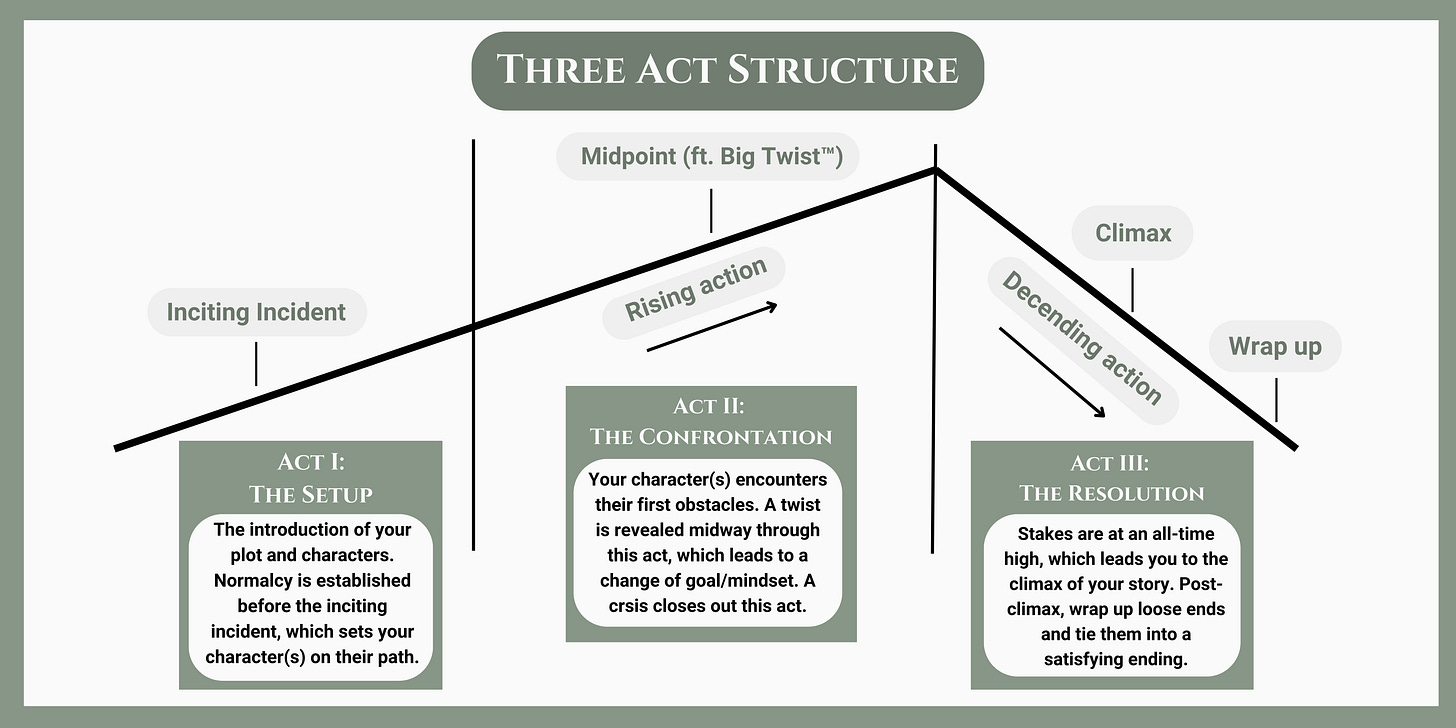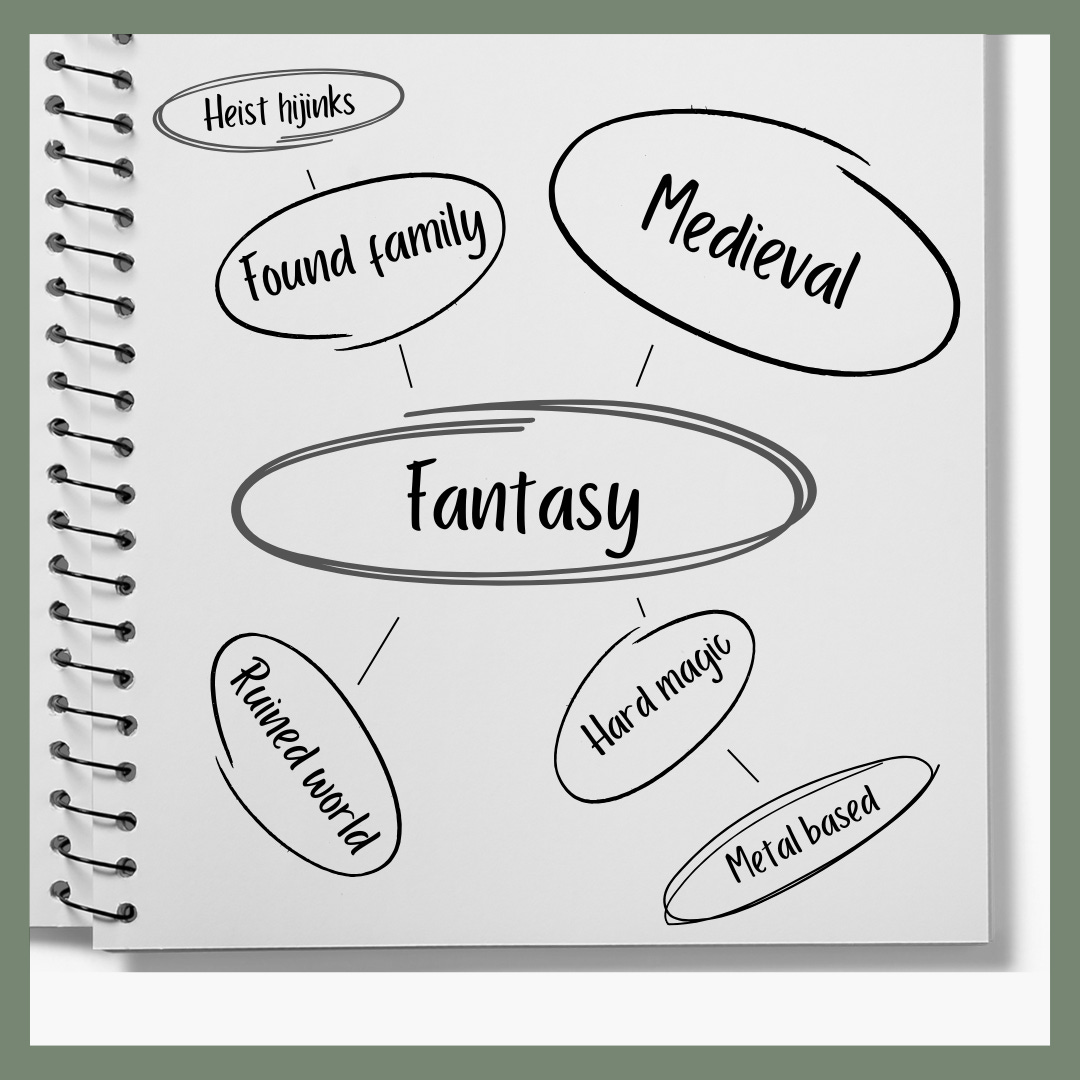Outlining: common methods
Tried and true methods of making a comprehensive (more or less) outline
Last week, we covered types of outliners—or more accurately, the spectrum of outlining and where you as a writer fall—from pantsers (little to no outlining) to plotters (every detail accounted for). Now that you know a bit more about your outlining process, let’s delve a little deeper.
Most common outlining formats
These outlining formats will range from basic story structure that you can use to ensure your story is following the beats it needs to to techniques that provide more of a top down view of your story.
Three act structure
You know her, you love her, the three act structure is the most popular narrative technique that separates your story into three distinct parts: the setup, confrontation, and resolution.
Essentially, your three acts would look like this:
At its most basic level, using this format ensures your story is, well, a story. Everything you write—be it flash fiction, short stories, or novels—should have an arc that mimics this structure to a degree.
We’ll take a deep dive into the three act structure (and ways you can switch it up ;)) in a later post, but for now, we press on.
Synopsis outline
This type of outline can take many different forms, one being a chronological collection of your major story beats and another a more in-depth outline that details your novel scene by scene until its conclusion.
This format is great for someone who falls more so in the plantsers category as it can take the form of whatever you’d like. Just want to lay out the general direction of your story and fill in the rest as you go? Very laidback and chill, I’m impressed. Want every interaction logged and color-coded in a neatly labeled binder? Godspeed, I don’t envy you.
If you’re not looking for anything too serious, mess around with a synopsis outline to find out how in depth you need to be to do your story justice.
Character outline
This is the outline for the character-driven story girlies. Instead of outlining your novels based on the story beats, try an outline that revolves around the development of your characters. This way, your novel is structured around the beats of your character’s arcs.
Lucky for you, your character arcs will revolve around the actions of those around them and your plot, so it’s like killing two birds with a character-shaped stone.
Mind mapping
While mind mapping is generally used as a brainstorming technique, it can be great for helping you visualize the spread of your story.
If you’ve never tried mind-mapping, it’s a technique that allows you to organize information into a hierarchy of relationships and connections. Most start with a single, broad concept that is broken down into its simpler parts. For a story, it may look something like this:
Mind mapping is also known for its versatility. It can easily be used to map out story beats, sure, but it’s particularly helpful with character work, too. In this case, it might look more like this:
My Sprig of Sage
I’ll be honest, I’ve been the every-detail-accounted-for-color-coded-outline girlie. Or at least, have tried to be in the past. And all the love in the world to those girlies—they kept many of us college—but I don’t know how they do it.
Nowadays, I’ll stick pretty closely to a loose synopsis outline if I make an outline at all. Other than that, I’ve been enjoying writing without a single thought of what is happening with the plot or characters. Only in works that I don’t plan on publishing, don’t worry, but still. It’s a method that took away some of the pressure of writing a good novel in exchange for rediscovering that initial passion of writing simply to create fun stories with intriguing characters.
And by intriguing characters I mean everyone is gay and in love and that’s all it has to be cause it’s my story, fight me about it.
Threats of violence aside, I hope this post helped you figure out a little bit more about yourself as a writer—and maybe even outliner?
-Sage 🌱




